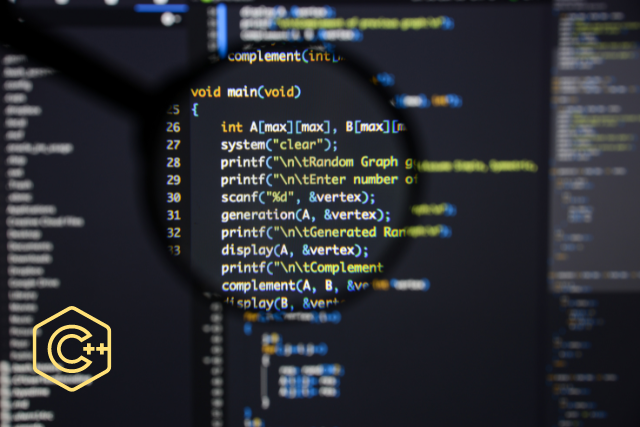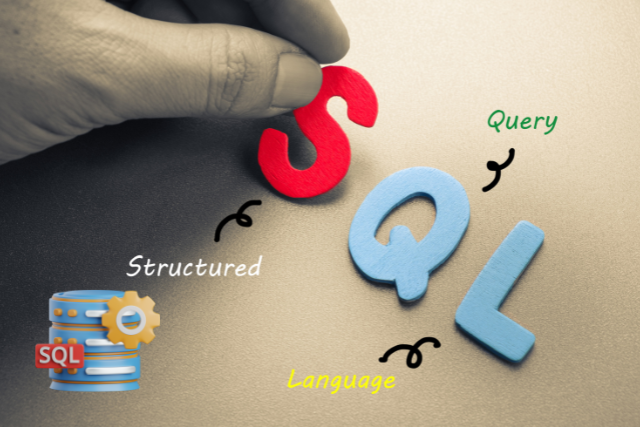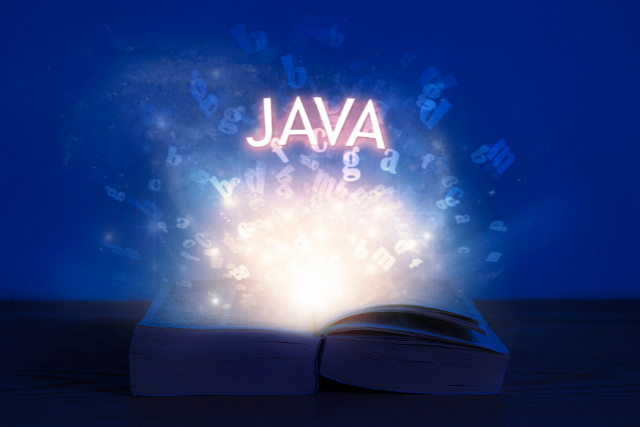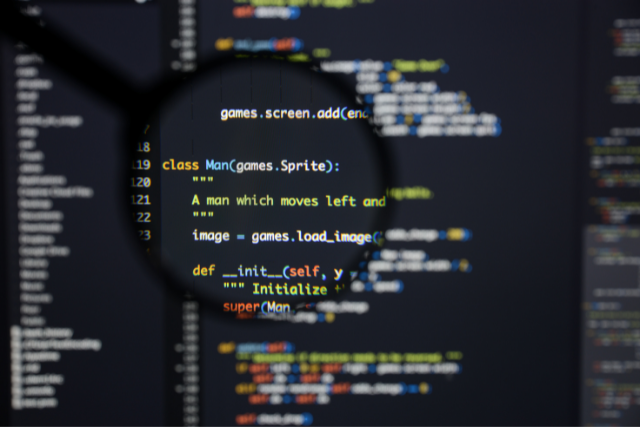C++ is a powerful, high-performance programming language in many critical applications, from system/software development to game development and real-time simulations.
Understanding fundamental and advanced concepts is crucial if you’re preparing for a C++ programming interview. Below are 40 frequently asked questions in C++ programming interviews, with detailed explanations to help you succeed.
Introduction to C++
C++ is a statically typed, free-form, multi-paradigm, compiled general-purpose programming language. It is well-known for its efficiency and flexibility, making it a favourite among developers for creating resource-intensive applications. Here are some common interview questions and answers to help you get started.
Basic Concepts
1. What is C++?
C++ is a general-purpose programming language created by Bjarne Stroustrup as an extension of the C programming language. It supports both procedural and object-oriented programming paradigms.
2. What are the key features of C++?
C++ offers several key features, including:
- Object-Oriented Programming (OOP)
- Encapsulation
- Inheritance
- Polymorphism
- Abstraction
- Standard Template Library (STL)
3. What is the difference between C and C++?
C is a procedural programming language, while C++ supports procedural and object-oriented programming. C++ introduces OOP concepts, such as classes and objects, which are unavailable in C.
Object-Oriented Programming (OOP)
4. What is a class in C++?
A class in C++ is a blueprint for creating objects. It encapsulates data for the object and methods to manipulate that data.
5. What is an object in C++?
An object is an instance of a class. It contains data and methods defined by its class.
6. Explain the concept of inheritance in C++.
Inheritance allows a class (derived class) to inherit attributes and methods from another class (base class). This promotes code reusability and hierarchical classification.
7. What is polymorphism in C++?
Polymorphism allows functions to be defined with the same name but behave differently based on the input. There are two types:
- Compile-time polymorphism (function overloading and operator overloading)
- Run-time polymorphism (virtual functions)
8. What is encapsulation?
Encapsulation is the bundling of data and methods that operate on the data within a single unit, typically a class. It restricts direct access to some of the object’s components, preventing accidental interference and misuse of the data.
9. What is abstraction?
Abstraction is the concept of hiding the complex implementation details and showing only the necessary features of the object.
Advanced Concepts
10. What are pointers in C++?
Pointers are variables that store the memory address of another variable. They are used for dynamic memory allocation, arrays, and functions.
11. Explain the concept of dynamic memory allocation in C++.
Dynamic memory allocation allows you to allocate memory at runtime using pointers. The new keyword is used to allocate memory, and the delete keyword is used to deallocate memory.
12. What are constructors and destructors in C++?
Constructors are special member functions that are called when an object is instantiated. Destructors are called when an object is destroyed to release resources.
13. What is operator overloading in C++?
Operator overloading allows you to define custom behavior for operators (like +, -, *, etc.) for user-defined types.
14. What is the Standard Template Library (STL)?
The STL is a robust set of C++ template classes to provide general-purpose classes. It functions with templates that implement many popular and commonly used algorithms and data structures like vectors, lists, queues, and stacks.
Code Structure and Syntax
15. What is a namespace in C++?
A namespace is a declarative region that provides a scope to the identifiers (names of types, functions, variables, etc.) inside it. The std namespace is the standard namespace in C++.
16. What are templates in C++?
Templates allow functions and classes to operate with generic types. This enables a function or class to work on different data types without being rewritten for each type.
17. Explain the concept of exception handling in C++.
Exception handling in C++ is done using three keywords: try, catch, and throw. It allows you to manage runtime errors gracefully.
18. What is a virtual function in C++?
A virtual function is a function in a base class that can be overridden in a derived class. It is used to achieve run-time polymorphism.
19. What is a pure virtual function?
A pure virtual function is a function that has no implementation in the base class and must be overridden in the derived class. It is declared by assigning 0 to the function declaration.
20. What is the difference between struct and class in C++?
In C++, struct and class are almost identical, except that the members of a struct are public by default, whereas in a class, they are private by default.
Memory Management
21. What is the difference between new and malloc()?
new initializes the memory, whereas malloc() allocates uninitialized memory. new also calls constructors, while malloc() does not.
22. What is the difference between delete and free()?
delete deallocates memory and calls the destructor, while free() only deallocates memory.
23. Explain memory leak in C++.
A memory leak occurs when a program allocates memory by using new but fails to deallocate it using delete. This leads to a loss of memory over time.
24. What is RAII in C++?
RAII (Resource Acquisition Is Initialization) is a programming idiom where resources are acquired and released by objects. When an object is created, it acquires resources, and when it is destroyed, it releases them.
Advanced Topics
25. What are smart pointers in C++?
Smart pointers are objects that act like pointers but provide automatic memory management. Examples include std::unique_ptr, std::shared_ptr, and std::weak_ptr.
26. Explain the concept of multithreading in C++.
Multithreading is the ability of a CPU, or a single program, to provide multiple threads of execution concurrently. C++11 provides a threading library to create and manage threads.
27. What is the difference between std::vector and std::array?
std::vector is a dynamic array that can change size, while std::array has a fixed size determined at compile time.
28. What is a lambda expression in C++?
A lambda expression is an anonymous function that can capture variables from its surrounding scope. It is defined using the [] syntax.
29. What is the significance of const keyword in C++?
The const keyword is used to define constant variables, pointers, and member functions that cannot modify the data they are associated with.
Design Patterns and Best Practices
30. What is the Singleton design pattern?
The Singleton pattern ensures that a class has only one instance and provides a global point of access to it.
31. What is the Factory design pattern?
The Factory pattern provides an interface for creating objects in a superclass, but allows subclasses to alter the type of objects that will be created.
32. What is the Observer design pattern?
The Observer pattern defines a one-to-many dependency between objects so that when one object changes state, all its dependents are notified and updated automatically.
33. Explain the concept of “Big Three” in C++.
The “Big Three” refers to the three special member functions: destructor, copy constructor, and copy assignment operator. If a class requires a user-defined destructor, it almost certainly requires a user-defined copy constructor and copy assignment operator.
34. What is move semantics in C++?
Move semantics allows the resources to be moved from one object to another rather than being copied. This is useful for optimizing performance, especially with temporary objects.
35. What is the Rule of Five in C++?
The Rule of Five states that if you need to explicitly declare either the destructor, copy constructor, copy assignment operator, move constructor, or move assignment operator, you probably need to declare all five.
Practical Implementation
36. Write a simple program to demonstrate the use of a class in C++.
#include <iostream>
using namespace std;
class Rectangle {
private:
int width, height;
public:
void setDimensions(int w, int h) {
width = w;
height = h;
}
int area() {
return width * height;
}
};
int main() {
Rectangle rect;
rect.setDimensions(5, 3);
cout << "Area: " << rect.area() << endl;
return 0;
}37. Explain the difference between deep copy and shallow copy.
A shallow copy copies all the member values from one object to another. However, if the members are pointers, both objects will point to the same memory location. A deep copy copies all fields and allocates new memory for any pointer fields, copying the actual data being pointed to.
38. What are the advantages of using C++ over other languages?
C++ offers several advantages:
- High performance and control over system resources
- Supports both high-level and low-level programming
- Rich function library (STL)
- Strong memory management capabilities
39. What is a pure virtual function in C++?
A pure virtual function is a function declared in a base class that has no implementation and must be overridden in derived classes. It is declared by assigning 0 to the function declaration:
virtual void functionName() = 0;40. What are some common pitfalls in C++ programming?
Some common pitfalls include:
- Memory leaks due to improper memory management
- Dangling pointers
- Undefined behavior due to accessing uninitialized variables
- Incorrect use of pointers and references
- Ignoring compiler warnings
FAQs
1. What is the difference between new and malloc() in C++?
new initializes the memory and calls constructors, while malloc() only allocates uninitialized memory.
2. How does C++ handle memory management?
C++ handles memory management through manual allocation and deallocation using new and delete operators.
3. What is a destructor in C++?
A destructor is a special member function called when an object goes out of scope or is explicitly deleted to release resources.
4. What are the types of polymorphism in C++?
Polymorphism in C++ is of two types: compile-time (function overloading and operator overloading) and run-time (virtual functions).
5. Why use smart pointers in C++?
Smart pointers automate memory management and help prevent memory leaks by ensuring that memory is properly deallocated when no longer needed.
6. What is the STL in C++?
The Standard Template Library (STL) is a collection of template classes and functions for common data structures and algorithms, enhancing code reusability and efficiency.
Preparing for a C++ programming interview requires a strong understanding of both basic and advanced concepts. This guide provides a comprehensive overview of frequently asked questions and answers to help you succeed in your interview. Good luck!







